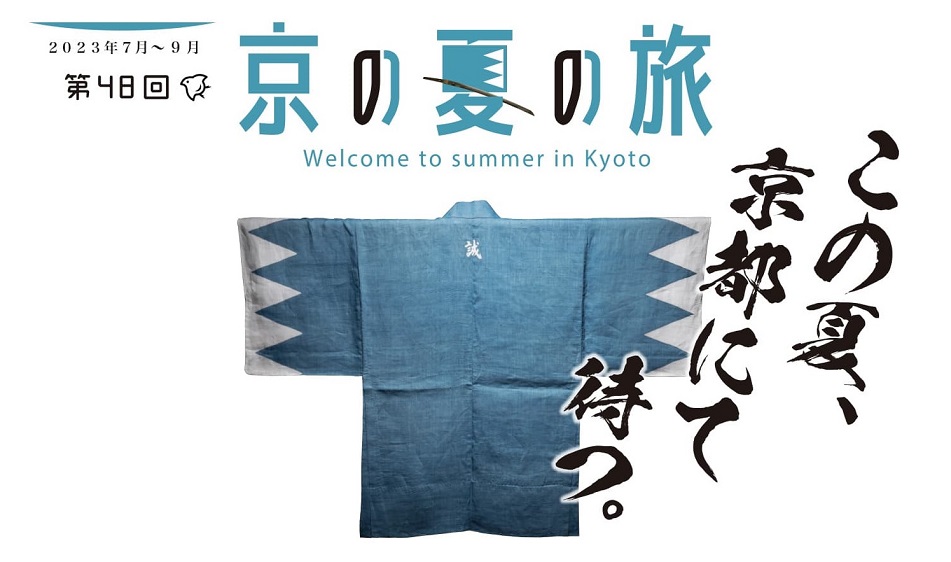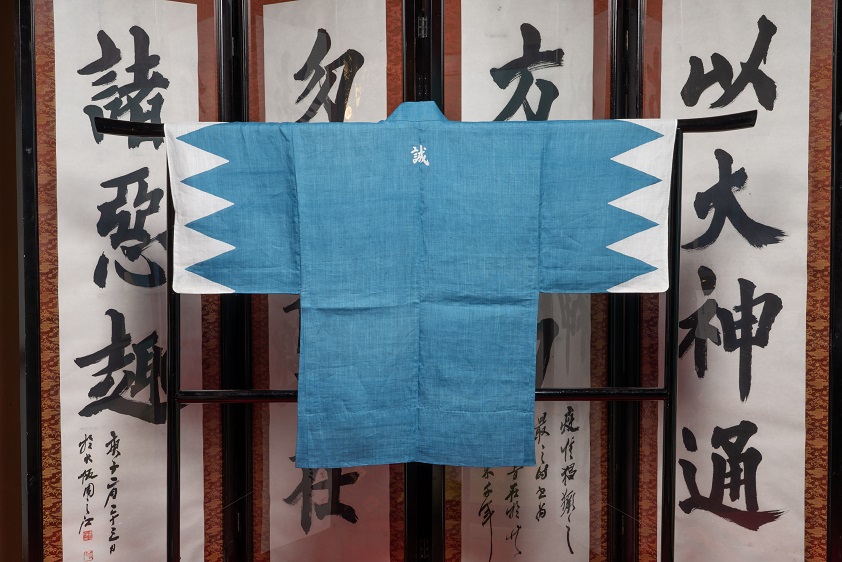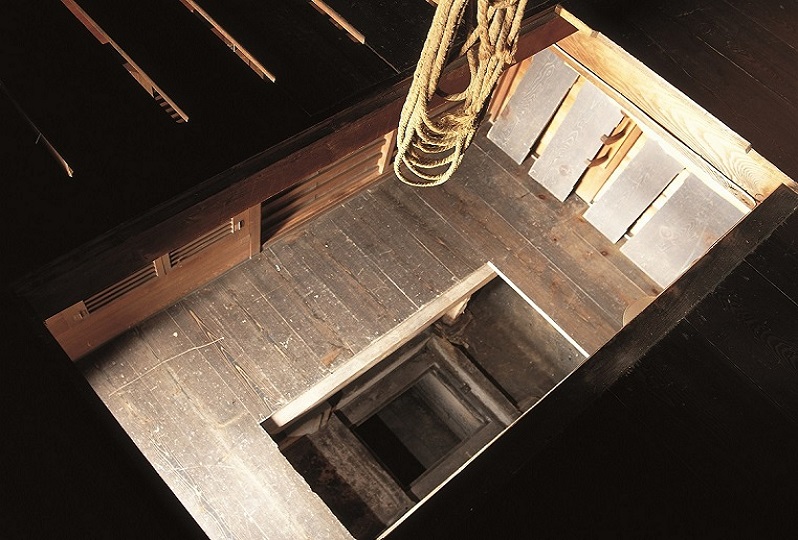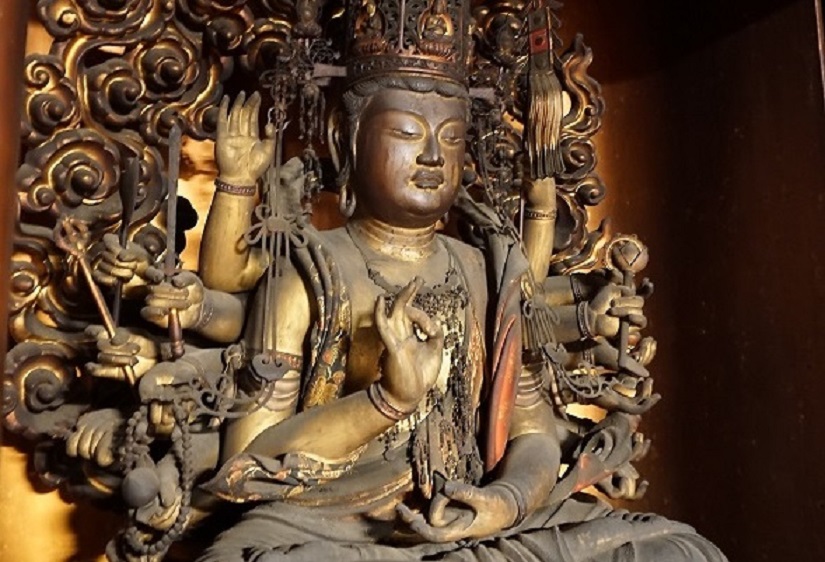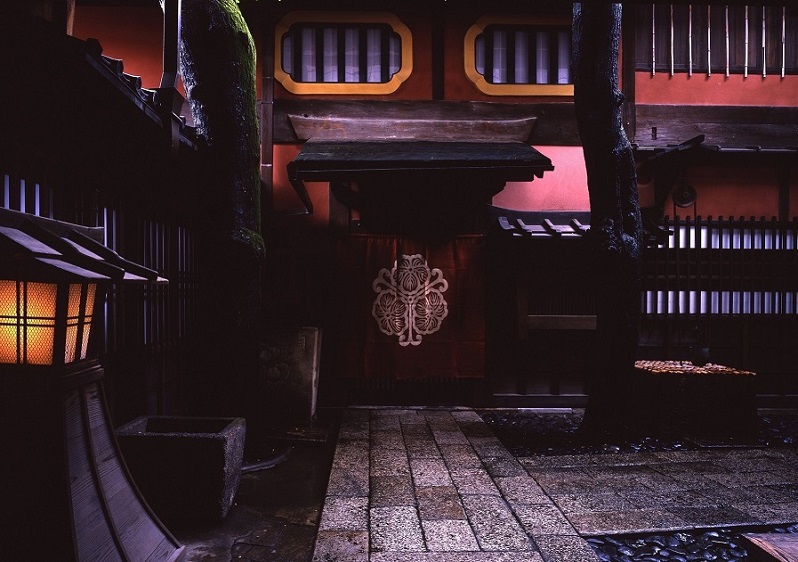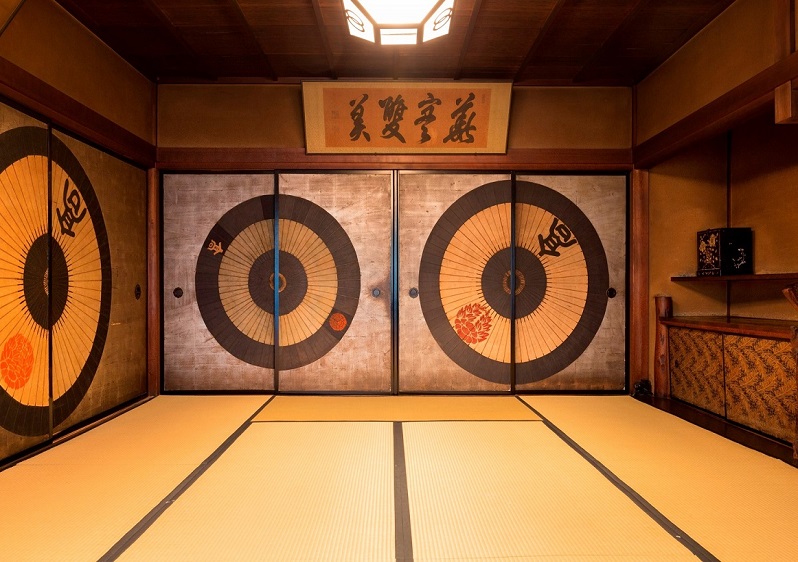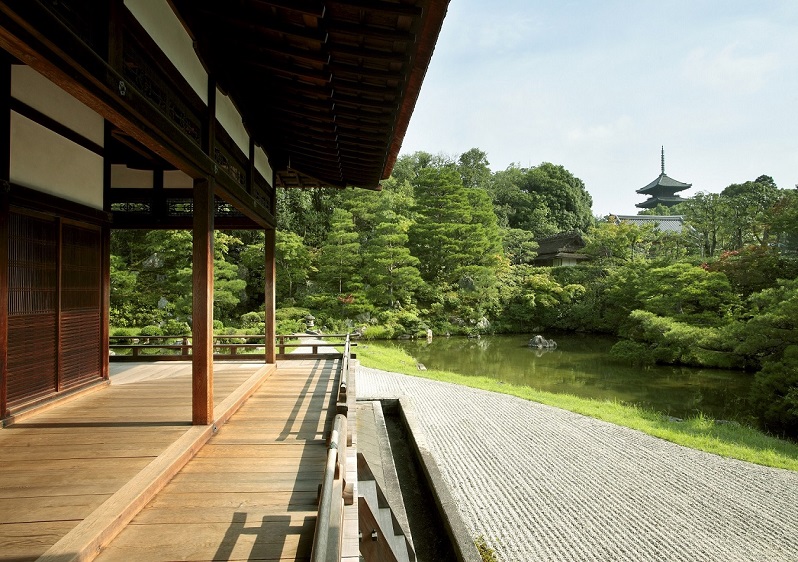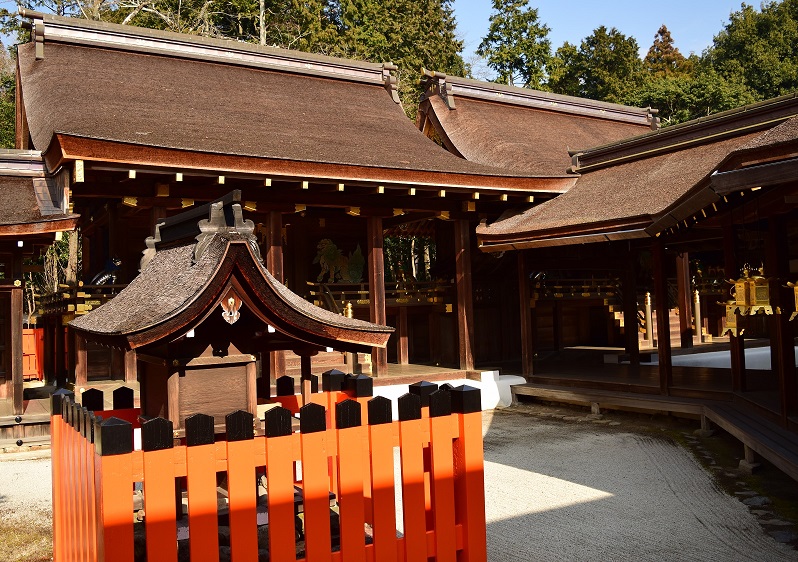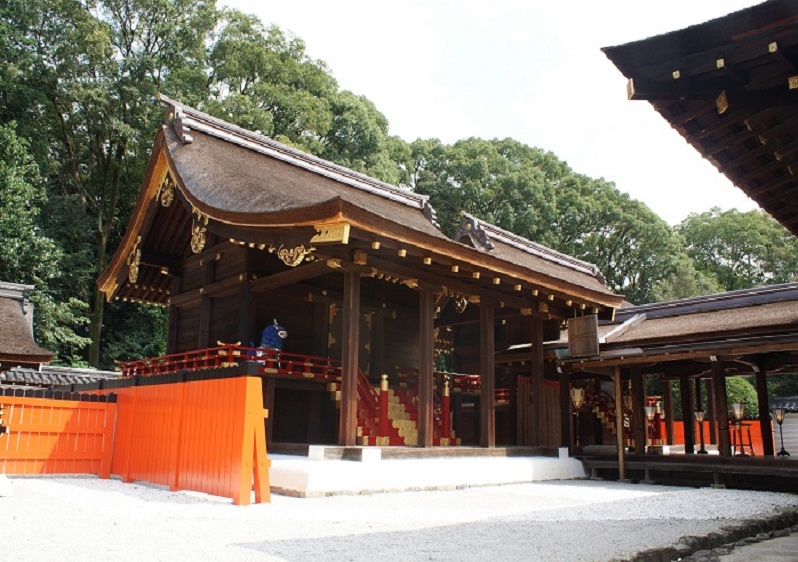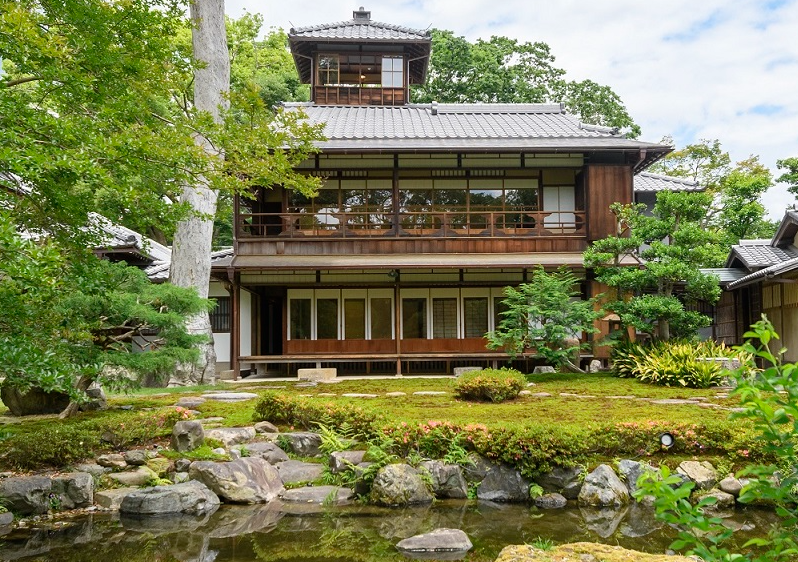See & Do
Kyoto Summer Special Openings 2023
01
01
See & Do
Kyoto Summer Special Openings 2023
What is Shinsengumi?
One such time was in the mid-19th century, when Japan was transitioning from the age of samurais to a modern nation. Kyoto was then a center of conflict between those who aimed to bring the Emperor back to power and those who supported the shogunate in Edo (Tokyo). It was a violent time when assassinations and terrorism repeatedly took place in Kyoto between these two factions, and the people lived in fear.
The Shinsengumi was a police-like organization composed of accomplished swordsmen under the shogunate to bring order to Kyoto, particularly to suppress the activity of anti-shogunate factions. This organization was led by Kondo Isami and Hijikata Toshizo, and at a time it had more than two hundred members. The Shinsengumi's struggle for the shogunate has been depicted in many films, novels, manga, and video games and continues to fascinate history fans to this day.
2023 is the 160th anniversary of the birth of Shinsengumi, so there will be special showings of swords and buildings related to the Shinsengumi during the Kyoto Summer Special Openings this year.
Dates
*Some of the places have different opening periods. Please check the sections below for more details.
Special opening hours
※The hours are different for some places. Please check the sections below for more details.
Special Opening Places
- Mibu-dera Temple Main Hall & Mibuzuka
- Former Residence of the Maekawa Family
- Shintoku-ji Temple
- Sumiya
- Wachigaiya
- Ninna-ji Temple Goten(Palace & Gardens)
- Kamigamo-jinja Shrine Honden(Main Sanctuary)and Gonden(Temporary Sanctuary)
- Shimogamo-jinja Shrine Honden(Main Sanctuary)and Oidono (Old Sanctuary Kitchen)
- Old Mitsui Family Shimogamo Villa
Admission fee (per place)
・Adults: ¥800・Age 6-12: ¥400
※Free for children age 5 and below
Free for persons age 18 and below
Persons of ages 13 to 18: ¥500
Persons of ages 6 to 12: ¥400
Notes
- No smoking
- No drinking
- No eating
- No photography in some areas. Please follow the instructions of each place when you wish to take photos. Some places may not allow photography of areas or objects related to religious worship. We ask for your understanding.
- Please unshoulder your backpack/shoulder bag or carry it in front of you in order to protect cultural property. If possible, please check in large pieces of baggage.
- Please refrain from visiting barefoot.
- Please do not touch any cultural property (pictures on partitions, Buddhist statues, etc.).
Details
Mibu-dera Temple Main Hall & Mibuzuka
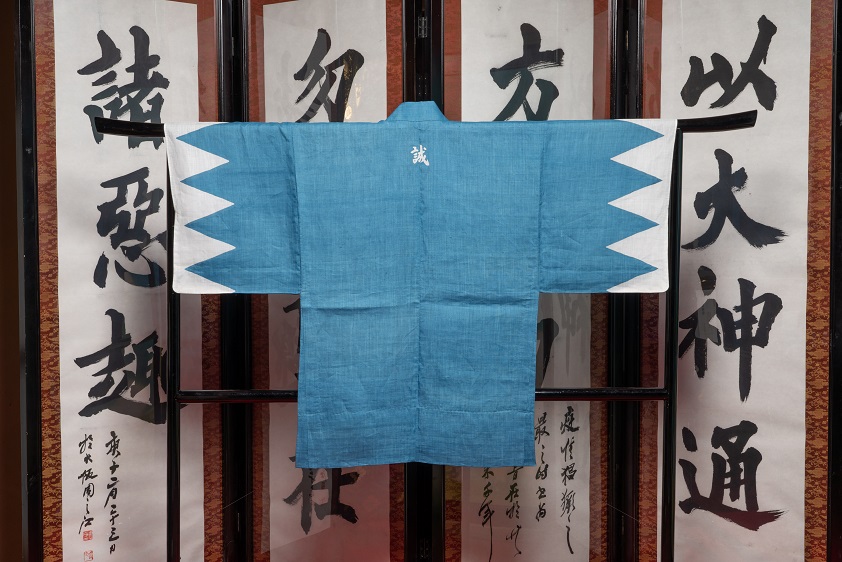
| Built in 991 AD, Mibu-dera Temple has over a millennium of history. In the mid-19th century, during the last years of Japan's feudal period, the Shinsengumi stayed in the area called Mibu surrounding this temple for two years, using the temple precincts to practice swordsmanship and the use of cannons. The main hall of this temple, which is normally closed to the public, will open its doors during the Kyoto Summer Special Openings. Although the main hall was rebuilt in 1970, the image of the deity, Jizo Boddhisattva, that stands in its center was created in the Heian period (794-1185), making it one of the oldest extant Jizo images. In addition, the murals in the main hall depict Buddhist imagery in beautiful colors by applying the famous Yuzen-zome techniques, which are used to dye kimono in Kyoto. Replicas of the Shinsengumi uniforms will also be exhibited in the main hall. These are light-blue haori short coats with a white, triangular pattern on the sleeves. On the back is a Chinese character meaning "truthful" or "faithful." In addition to the main hall, you can also visit Mibu-zuka, which is a small island in a pond on the temple precincts. On the island is a bust of Kondo Isami, the leader of Shinsengumi, and another of the subleader Hijikata Toshizo is also to be erected on July 16th, 2023. These busts were both created based on photographs taken at the time, offering a glimpse as to how these two men appeared in real life. |
|||||
| Dates | July 8th (Sat) to September 30th (Sat) 2023 | ||||
| Hours | 10:00 - 16:30 (Admission until 16:00) | ||||
| Acccess |
10 minutes walk from JR Sagano Line's Tanbaguchi Station (one ride from Kyoto Sta.) |
||||
| Additional notes/ information about changes |
- Opens 11 AM on July 16th (Sun) and 25th (Tue). - Opens 12 PM on July 31st (Mon). |
||||
| Official Website | |||||
Former Residence of the Maekawa Family
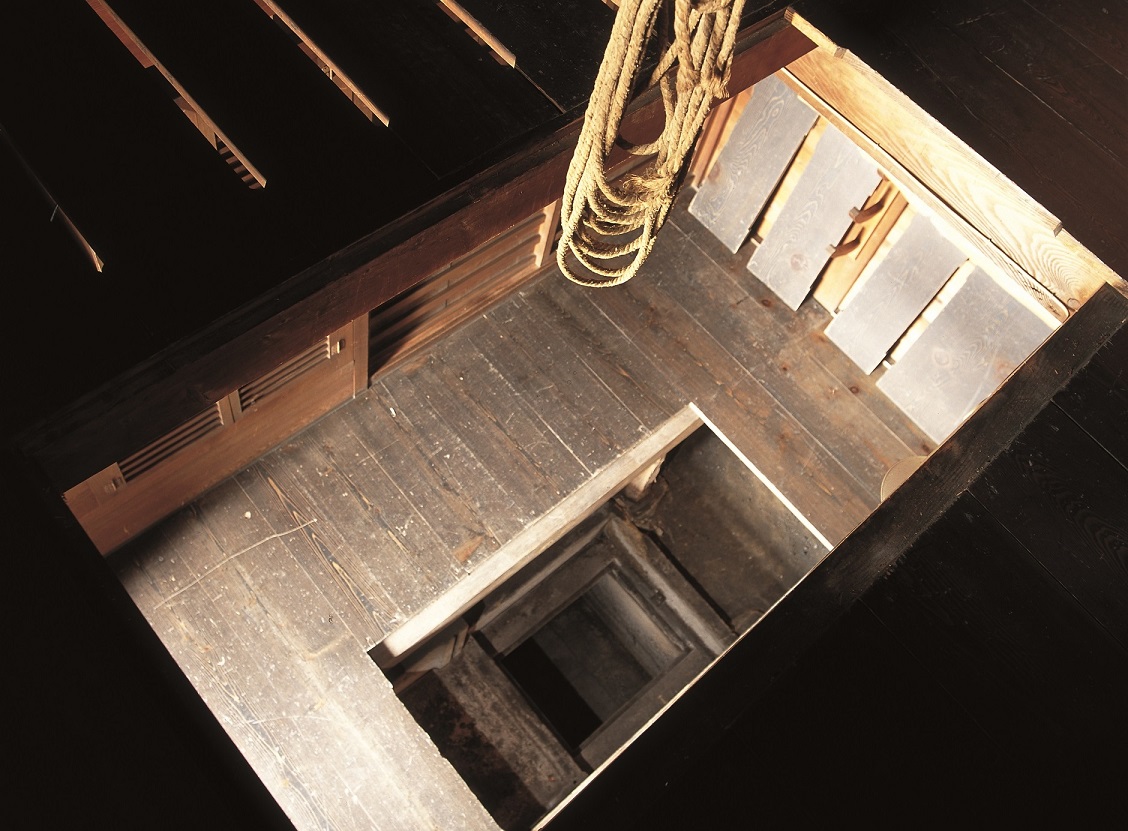
| The Former Residence of the Maekawa Family was where some of the members of the Shinsengumi lived for two years from 1863, making it a base for their operations. Not all the structures of the residence remain today. Moreover, the main house is not open to public, as it is currently inhabited. However, the residence's eastern storehouse ("Higashi no Kura"), which is famous among Shinsengumi fans, will be made open to public for this special opening period. The Maekawa family, to whom this residence belonged, were merchants in the trade of money exchange and financing. Completed in 1839, the Higashi no Kura is a robust structure secured by quadruple doors, designed to store valuables. A floorboard on the first floor could be removed to access an underground area that was used as a safe, and a part of the second-story floor could also be opened to see the first floor and the underground safe underneath, and from the ceiling hangs a rope that could be used to hoist things up and down between these floors. Higashi no Kura is famous as the place where Shinsengumi's subleader Hijikata Toshizo interrogated a member of an enemy faction by hoisting him on the aforementioned rope. The man was tortured until he finally elicited information about the faction's plans. There is also a sword mark on a window frame, believed to have been created by one of the Shinsengumi members. |
|||||
| Dates | July 8th (Sat) to September 30th (Sat) 2023 | ||||
| Hours | 10:00 - 16:30 (Admission until 16:00) | ||||
| Acccess |
12 minutes walk from JR Sagano Line's Tanbaguchi Station (one ride from Kyoto Sta.) 4 minutes walk from Kyoto City Bus's Mibudera-michi bus stop (take bus #26 or #28 from Kyoto Sta.) |
||||
| Additional notes/ information about changes |
|
||||
| Official Website | https://kyu-maekawatei.com/ | ||||
Shintoku-ji Temple
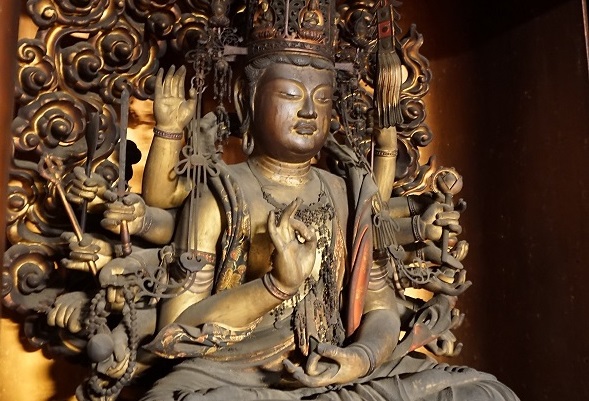
| Shintoku-ji is a temple founded in 1739, and it was later the stage of an event that led to the birth of Shinsengumi. Kondo Isami and Hijikata Toshizo, both confident swordsmen, had originally come from Edo(Tokyo) to Kyoto after responding to a call by the shogunate for "strong men skilled in swordsmanship to bring order to Kyoto." The new group of swordsmen, composed of these two and some two hundred others who responded to the shogunate's call, was called "Roshigumi." Its leader--and the person who planned its creation--was a man named Kiyokawa Hachiro. Yet Kiyokawa's plan was not what the members of Roshigumi expected. As soon as arriving in Kyoto, Kiyokawa gathered the group in Shintoku-ji's main hall and gave a speech requesting the members' cooperation in none other than defeating the shogunate, saying that the country must change. Kiyokawa eventually returned to Edo, and Kondo, Hijikata, and others remained in Kyoto to continue to work for the shogunate, contrary to Kiyokawa's wish. These swordsmen who remained became the Shinsengumi, which literally means "the newly elected group." The temple's main hall and its old candle holders are from that time, allowing viewers to imagine what it was like when the large group of men gathered and listened to Kiyokawa's unexpected speech. Shintoku-ji's principal image is the Jundei Kannon Boddhisattva (Cundi), a goddess believed to answer prayers for fertility and safe childbirth. In addition, to the right stands an image of Jizo Boddhisattva, also known as "Yanefuki Jizo" ("roof thatching Jizo"), as it is associated with an old story about Jizo appearing as a young priest to help an elderly woman fix her house's roof that had been destroyed by a typhoon. |
|||||
| Dates | July 8th (Sat) to September 30th (Sat) 2023 *Sep 19th (Tue), 22nd (Fri),23rd (Sat) will be closed. |
||||
| Hours | 10:00 - 16:30 (Admission until 16:00) *Only Sep 17th(Sun) will open at 12:30 |
||||
| Acccess | 11 minutes walk from the JR Sagano Line's Tanbaguchi Station (one ride from Kyoto Sta.) 4 minutes walk from Kyoto City Bus's Mibudera-michi bus stop (take bus #26 or #28 from Kyoto Sta.) |
||||
| Additional notes/ information about changes |
Closed to the public on September 19th (Tue), 22nd (Fri), and 23rd (Sat). |
||||
Sumiya
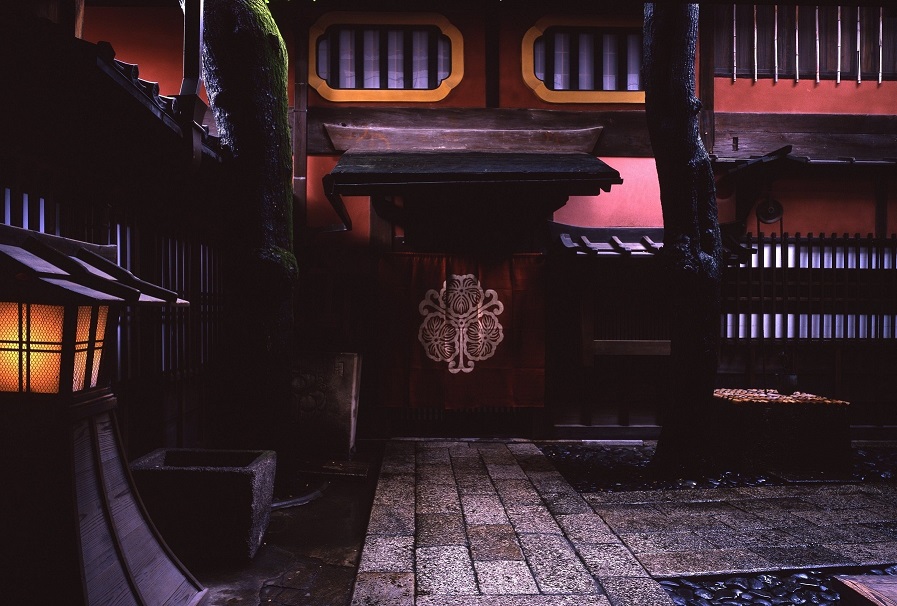
| The area where Sumiya stands is called "Shimabara," and it was a 'geisha district' designated by the government. Sumiya (Important Cultural Property) is the finest extant example of ageya architecture. Ageya were elegant restaurants where banquets and dinner parties were held accompanied by the entertainment of geiko(geisha) and tayū (geisha of the highest rank), who performed chanoyu (tea ceremony), sang and danced. They functioned as cultural salons for many distinguished people such as wealthy merchants, scholars, and artists. This particular ageya was frequented by members of the Shinsengumi, and one of its pillars retains a sword mark believed to have been created by one of them. Each room in this building has a different design with a different wall color and ceiling material. The most famous of the rooms are the Matsu-no-ma, which has a large pine tree in its garden, and the Ajiro-no-ma. *Although Sumiya has a second floor, only the first floor will be open to public during the Kyoto Summer Special Openings. *The tayū cannot be seen here. |
|||||
| Dates | July 19th (Wed) to September 14th (Thu) 2023 | ||||
| Hours | 10:00 - 16:00 (Admission until 15:30) | ||||
| Acccess | 7 minutes walk from JR Sagano Line's Tanbaguchi Station (one ride from Kyoto Sta.) 10 minutes walk from Kyoto City Bus's Shimabaraguchi bus stop (take bus #206 from Kyoto Sta.) 7 minutes walk from Kyoto City Bus's Umekoji Koen / JR Umekoji-Kyotonishi Sta. bus stop (take bus #205) |
||||
| Additional notes/ information about changes |
Also open to public from 3/15 to 7/18 and from 9/15 to 12/15 (closed on Mondays, or the following day if a national holiday falls on Monday; admission fees: ¥1,000 for persons age 19 and above, ¥800 for ages 13 to 18, ¥500 for elementary school students) During the Kyoto Summer Special Openings, the exhibits will be changed to Shinsengumi-related items, and the admission fees will be slightly lower than usual. |
||||
| Official Website | http://sumiyaho.sakura.ne.jp/page/english.html | ||||
Wachigaiya
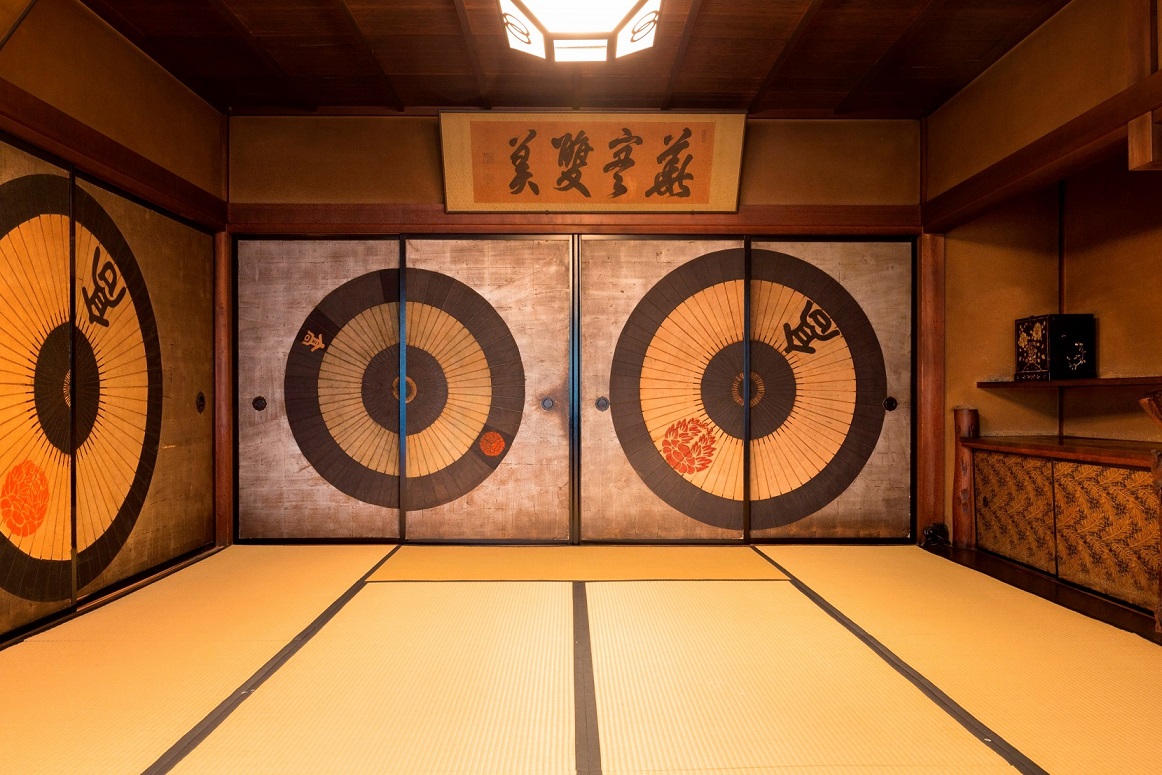
| The area where Wachigaiya is located is called "Shimabara," and it was a 'geisha district' designated by the government. Wachigaiya is an agent office for tayū (geisha of the highest rank), and sometimes customers come to this building and participate in banquets. The current building was built in 1857. It has rooms with distinctly original designs, including one called "Kasa-no-ma" ("umbrella room") where paper removed from traditional umbrellas used by tayū are pasted on the sliding doors, and another called "Kōyō-no-ma" ("room of autumn leaves") with walls which momiji maple leaves have been drawn tracing real ones, and then colored. *There will be no banquets during the special opening, and no tayū will be present. |
|||||
| Dates | July 8th (Sat) to August 31st (Thu), September 16th (Sat) to 24th (Sun) 2023 | ||||
| Hours | 10:00 - 16:00 (Admission until 15:30) | ||||
| Acccess | 7 minutes walk from JR Sagano Line's Tanbaguchi Station (one ride from Kyoto Sta.) 7 minutes walk from Kyoto City Bus's Shimabaraguchi bus stop (take bus #206 from Kyoto Sta.) 8 minutes walk from Kyoto City Bus's Umekoji Koen / JR Umekoji-Kyotonishi Sta. bus stop (bus #205) |
||||
| Additional notes/ information about changes |
Closed to the public from September 1st (Fri) to 15th (Fri), and from September 25th (Fri) to 30th (Sat). |
||||
Ninna-ji Temple Goten
(Palace & Gardens)
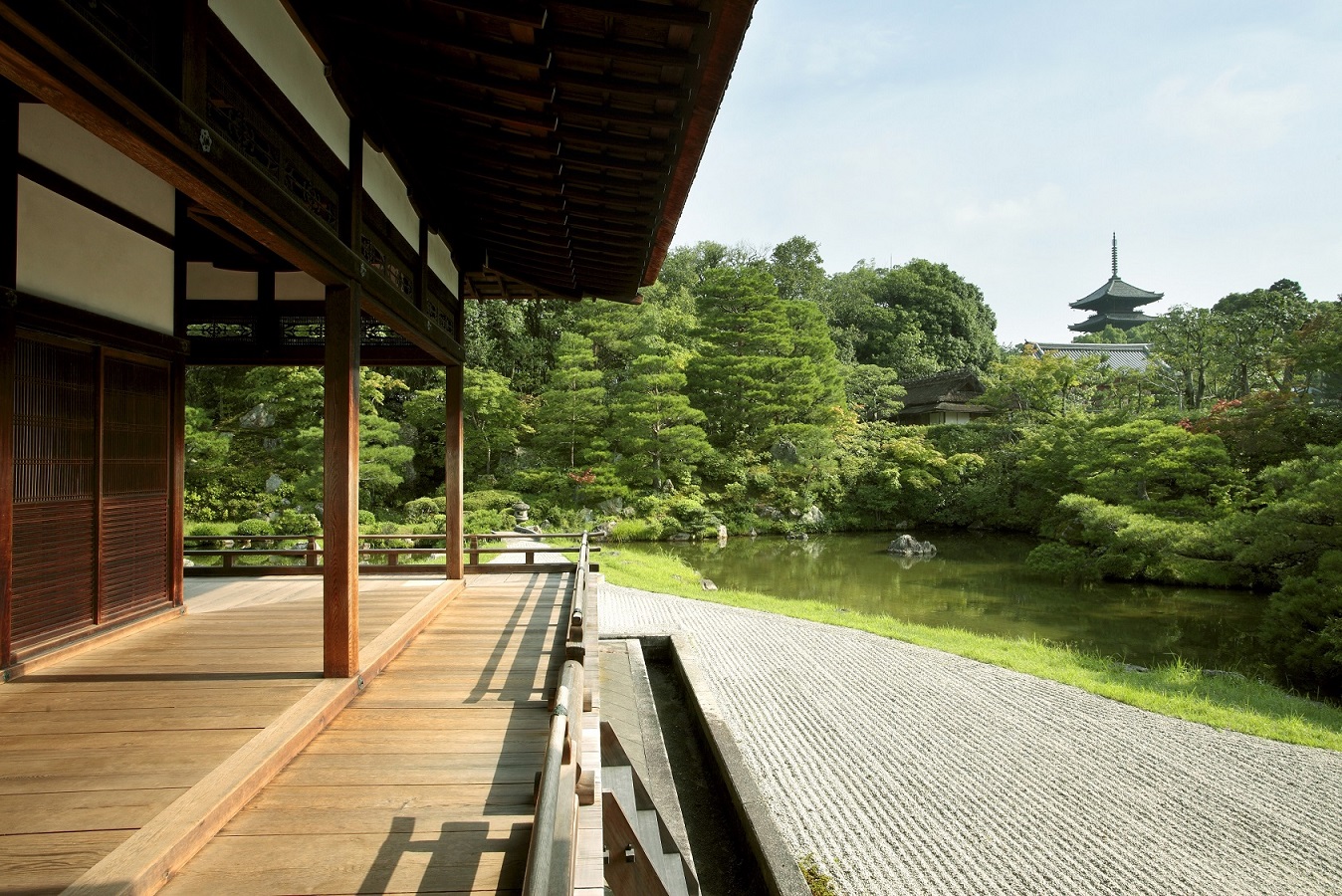
| Ninna-ji Temple was built in 888 CE, and it has been designated as a UNESCO World Heritage site. Emperor Uda (867-931) was born here, and he later lived here as the first head priest. Ninna-ji is what is called a monzeki temple. Monzeki refers to Buddhist priests of aristocratic or imperial lineage, priests who served the imperial family, and the temples where they lived. Ninna-ji is the head temple of the Omuro school of Shingon Buddhism. Most of its head priests were from the imperial family, and the head priest's residence was called "Omuro," an honorific term for "dwelling." Ninna-ji Temple's palace has a beautiful Japanese garden with an exquisite view of a five-storied pagoda. This is the only temple garden in Kyoto with a view of a five-storied pagoda. Visitors are normally not allowed to walk in the garden, but a special garden path will be made open to the public during the Kyoto Summer Special Openings. |
|||||
| Dates | July 8th (Sat) to September 30th (Sat) 2023 | ||||
| Hours | 9:00 - 17:00 (Admission until 16:30) | ||||
| Acccess | 1 minute walk from Kyoto City Bus and JR Bus's Omuro Ninnaji bus stop (From Kyoto Station, take JR Sagano Line to Enmachi Station and then take Kyoto City Bus #26.) 3 minutes walk from Keifuku Electric Railroad's Omuro Ninnaji Sta. (From Kyoto Station, take JR Sagano Line to Uzumasa Station, then take Keifuku Electric Railroad from Satsueisho-mae Station.) |
||||
| Official Website | |||||
Kamigamo-jinja Shrine
Honden(Main Sanctuary)and Gonden(Temporary Sanctuary)
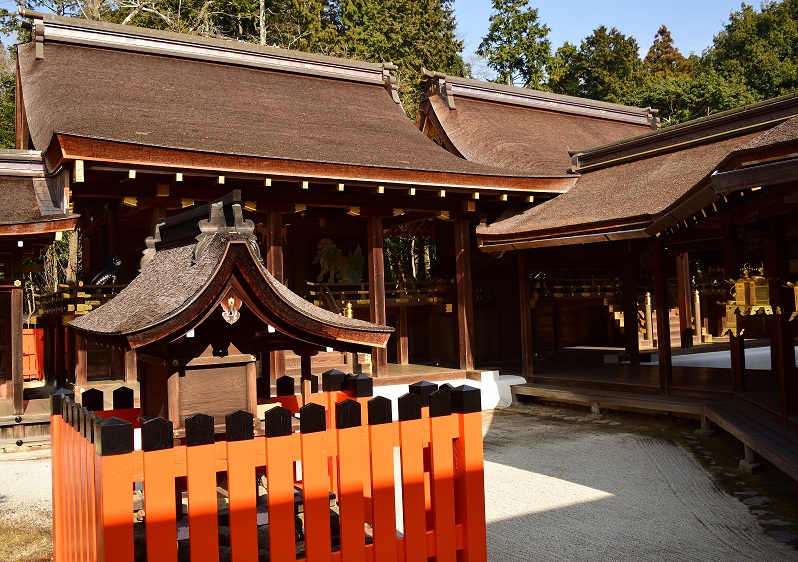
| Kamo Wakeikazuchi Jinja Shrine, commonly known as Kamigamo-jinja Shrine, is believed to have been founded by 677 CE, making it one of the oldest shrines in Kyoto. Two of its buildings have been designated as National Treasures, and there are 41 Important Cultural Properties on its large premise that has been registered as a UNESCO World Heritage site. The shrine is dedicated to a deity named Kamo Wakeikazuchi no Ōkami, who, according to legend, descended on Mt. Koyama to the north of the shrine in ancient times when deities ruled Japan. This shrine enters a ritual reconstruction period every twenty-one years called shikinen sengū. Prominent shrines have historically rebuilt and renewed their sacred structures at designated intervals to keep them "pure" and ever-new. In modern times, however, shikinen sengū at Kamigamo Jinja involves repairs and maintenance on the shrine buildings without complete reconstruction. The current Honden (Main Sanctuary) building was built in 1863 and has been maintained since then. When work is to be carried out on the Honden during the shikinen sengū period, the deity is symbolically transferred to an almost identical building, the Gonden. Both buildings are designated as National Treasures. The last shikinen sengū at Kamigamo Jinja was in 2015, and the next is to be in 2036. The area including the Honden and the Gonden is a sanctuary normally closed to the public, but a Shinto priest will guide visitors into this area during the special opening period. The roofs of both the Honden and the Gonden are thatched by layering the bark of hinoki cypress. This is a traditional thatching method called "hiwada-buki" that is not seen outside of Japan. Kamigamo Jinja is believed to be a place good for matchmaking, romantic fulfilment, preventing misfortune, and good health. |
|||||
| Dates | July 8th (Sat) to September 30th (Sat) 2023 | ||||
| Hours | 10:00 - 16:30 (Admission until 16:00) | ||||
| Acccess | 1 minute walk from Kamigamo Jinja-mae bus stop on the Kyoto City Bus #4 5 minutes walk from Kamigamo Misonobashi bus stop on the Kyoto City Bus #9 |
||||
| Official Website | https://www.kamigamojinja.jp/en/ | ||||
Shimogamo-jinja Shrine
Honden(Main Sanctuary)and Oidono (Old Sanctuary Kitchen)
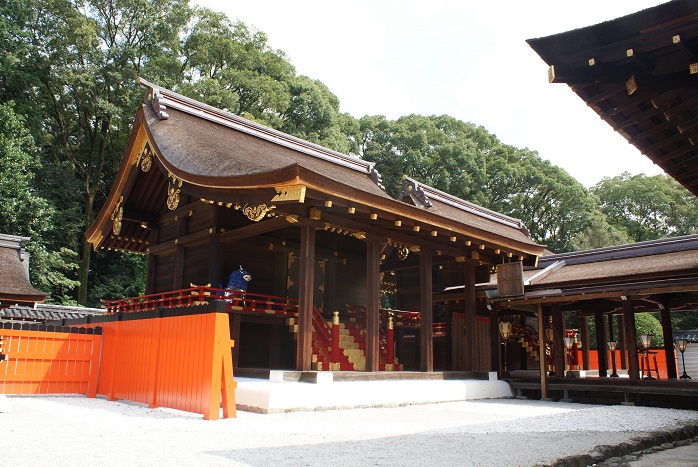
| Shimogamo-jinja Shrine, officially called Kamo Mioya Jinja, is believed to be one of the oldest shrines in Kyoto like Kamigamo Jinja Shrine, . It has a primeval forest with about six hundred broadleaved trees--chiefly zelkova, hackberry, and muku elm--with ages ranging from two hundred to six hundred years old. The forest retains largely the same composition of flora since the third century BC, making it a highly valued place from the perspective of forest ecology and environmental science. Shimogamo Jinja has two buildings that have been designated as National Treasures, and there are fifty-three Important Cultural Properties on its large premise, the entirety of which has been registered as a UNESCO World Heritage site. Like Kamigamo Jinja, Shimogamo Jinja enters the ritual reconstruction period called shikinen sengū every twenty-one years. However, as with Kamigamo Jinja, the shikinen sengū at Shimogamo Jinja in modern times involves only repairs and maintenance on the shrine buildings. Shimogamo Jinja has two Honden (main sanctuary) buildings, which are dedicated to the deities Kamo-taketsunumi-no-mikoto and Tamayorihime-no-mikoto respectively. They were built in 1863 and are designated as National Treasures. During the special opening period, you can enter a special area from which you can view the Honden buildings closer. From here you can have a good view of the roofs of the Honden buildings are thatched using the traditional "hiwada-buki" cypress-bark thatching method unique to Japan. In addition, you can visit the Ōidono hall, which serves as the traditional preparation site (kitchen) for all religious offerings of meals for the deities in Shimogamo shrine. |
|||||
| Dates | July 8th (Sat) to September 30th (Sat) 2023 | ||||
| Hours | 10:00 - 16:30 (Admission until 16:00) | ||||
| Acccess | 1 minute walk from Kyoto City Bus's Shimogamo-jinja-mae bus stop (bus #4 or #205 if coming from Kyoto Sta.) 12 minutes walk from Keihan Railway's Demachiyanagi Sta. (From Kyoto Station, take JR Nara Line to Tofukuji Station to ride the Keihan train.) |
||||
| Official Website | https://www.shimogamo-jinja.or.jp/english/ | ||||
Old Mitsui Family Shimogamo Villa
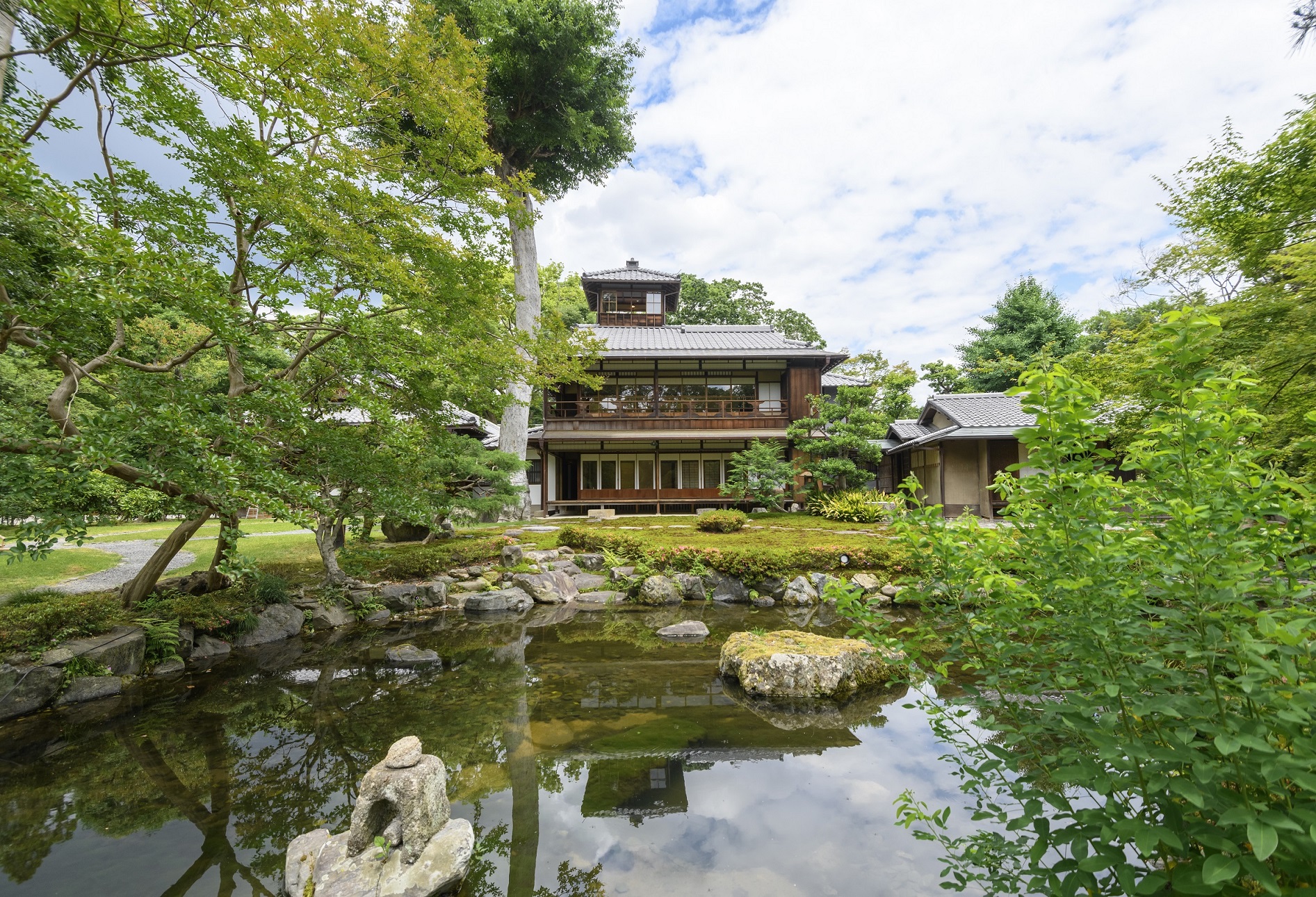
| The Old Mitsui Family Shimogamo Villa is a building that used to belong to the Mitsui family, a prominent merchant family in Japan. The family had built a shrine dedicated to their ancestors on this site in 1909. They needed a place to stay when visiting the shrine and thus commissioned this large residence in 1925. In the Kiyamachi area, the family had another residence and relocated its main building to the present location. The villa was transferred to the state in 1949, becoming government property, and it served as the housing of the chief of the Kyoto Family Court from 1951 to 2007. The main building and other structures from the Taisho period (1912-1926) have been maintained in an excellent condition. Highly valued as a fine example of large-scale traditional Japanese residence, it was designated as an Important Cultural Property in 2011. ■Main Building The main building has porches and windows opening to a fine garden on the south side. There is a watchtower on the third floor, offering a wonderful view of the Kamo-gawa River and the city's eastern mountains. It is also a highlight when considering the design of the garden as a whole. *The 2nd and 3rd floors are generally not open to the public. However, during the special opening period, you can visit the 2nd floor, which has a view of the beautiful garden. ■Entrance Hall The entrance hall section was added when the main building was relocated here. The architectural plan follows the traditional Japanese Shoin-zukuri style, but the ceiling is high and the interior has Western-style furnishings such as carpets, tables and chairs. ■Garden The moss garden in front of the building is beautifully tended. The water of the gourd-shape pond is drawn from the Izumi-gawa stream which runs through Shimogamo-jinja Shrine. The Old Mitsui Family Shimogamo Villa will also be open on weekend evenings for a limited period. The building and garden will be lit up with lanterns, creating a dreamy atmosphere. Dates: July 22 (Fri) to 24 (Sun), and July 29 (Fri) to 31 (Sun) Time: 5:30 PM to 8:30 PM (last admission 8:00 PM) Fees: If visiting only the first floor, the admission is ¥1,200 for persons age 19 and above and ¥600 for persons ages 13 to 18 (includes one drink; tax included). If visiting the second floor as well, the total admission fee is ¥1,800 for persons age 19 and above and ¥900 for persons ages 13 to 18 (includes one drink; tax included). *Free admission for persons age 12 and below. |
|||||
| Dates | August 17th (Thu) to 29th (Tue) 2023 | ||||
| Hours | 9:00 - 17:00 (Admission until 16:30) | ||||
| Acccess | 5 minutes walk from Aoibashi Nishizume bus stop on the Kyoto City Bus #205 5 minutes walk from Demachiyanagi Sta. bus stop on the Kyoto City Bus #4 or #17 5 minutes walk from Keihan Railway and Eizan Railway Demachiyanagi Sta. |
||||
| Additional notes/ information about changes |
The special opening of the second floor will be from August 17th (Thu) to 29th (Tue) (except for the 23rd, since the villa is closed on Wednesdays). The building's first floor and the garden, however, will be open on all days except Wednesdays. | ||||
| Official Website | https://kyoto.travel/en/historic-sites/258.html | ||||


